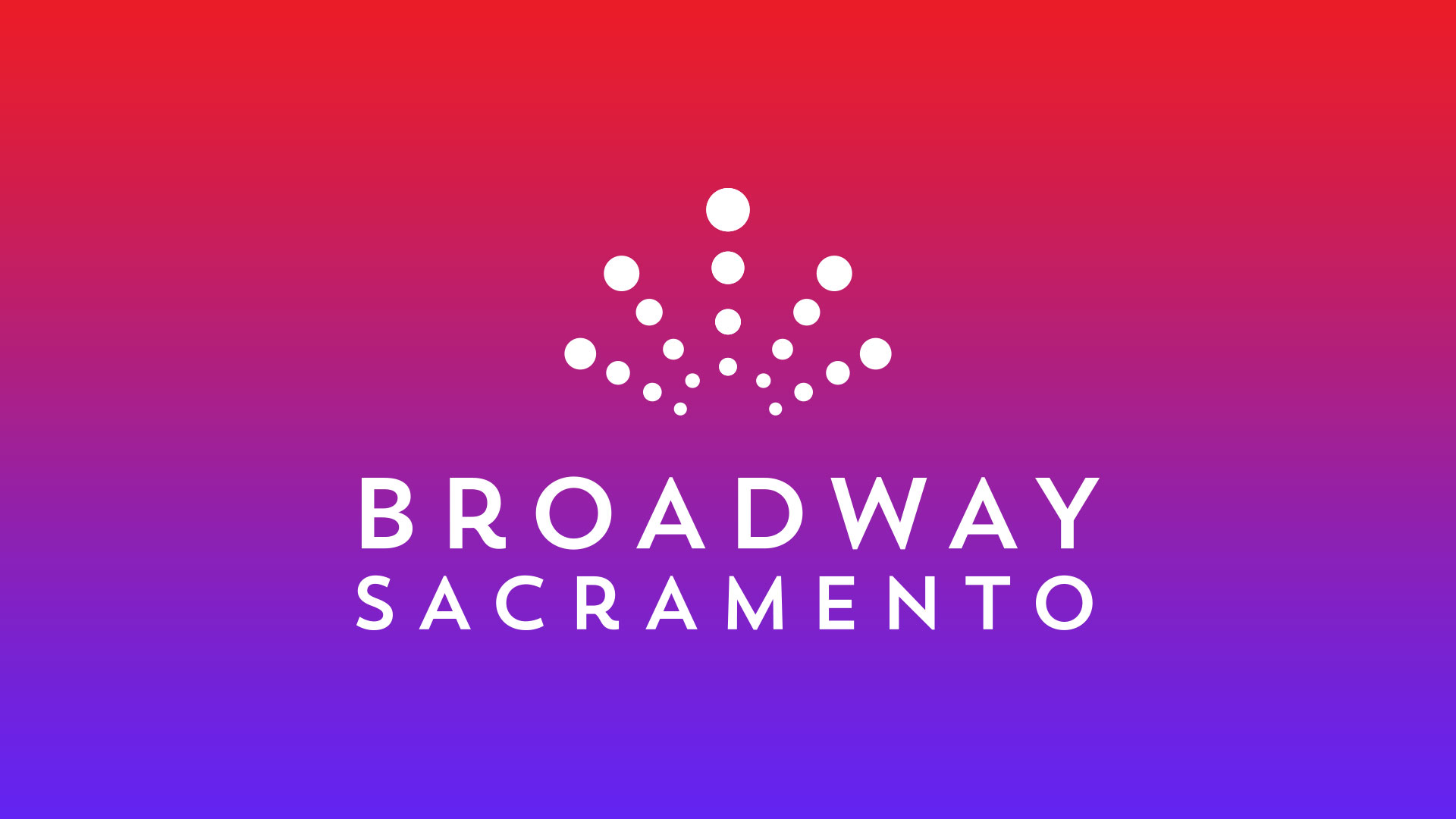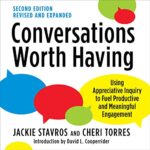Below you can view a portfolio of some of my favorite works.

As Operations Manager for Wholehearted, my set of tasks is incredibly diverse. I collaboratively determine branding direction, write all copy for the website, manage social media and promotional campaigns, and edit all sorts of videos.

I worked in the Marketing Department for Broadway Sacramento, the largest musical theatre company in California. My most notable responsibilities were copy editing, graphic design, and issuing press releases.

SmithGeiger performs data analysis and branding strategy for many influential clients in the media and journalism space. As a Media Research Associate for the firm, I learned how to analyze large data sets using Excel and SPSS. Now I incorporate the data background I gained from SG into my branding direction for my clients.

I wrote, recorded, and produced a theme song for this best-selling self-help book. I then used the song as the background for an animated commercial. I loved answering the question, "What might the theme for this book sound like?"

This client is an inspiring, very personable therapist and career coach. I created an engaging website for him that visually matched his enthusiastic personality. His clients love it and so did he!

I did some freelance video editing for 3Marketeers, creating B2B video advertisements for their clients to send to potential collaborators. The clients included big-name companies like Rocket Mortgage, Chewy, and Gap.

White Collar Grunge is a solo rock musician with a fun sound and clean-cut style. I remotely produced a music video for him during the pandemic. Limitations breed creativity, as they say! After this, projects where I can actually be in the same room as the client feel like a breeze.

I've created a series of graphical and animated assets for ScoreBook Live, a journalism company that covers high school sports. They appreciated my fast turnaround times and flexibility as a freelancer.
Here are some of the videos I had the most fun making. Please enjoy!
Featured Video
You need copy that is eloquently written, attention-grabbing, and SEO optimized. I can write anything from product descriptions to promotional emails and everything in between.

I’m happy to be a contracted freelance writer for American Songwriter, an esteemed online magazine that discusses all things music! Here is a link to my articles for this fun and informative publication.

Wholehearted.org is an educational content producer that partners with renowned thought leaders to create programs that address mental health, trauma healing, and human development. I’ve written hundreds of pages of professional course content for Wholehearted, as well as marketing copy, product descriptions, and email campaign copy.
Healing Trauma & Addiction is Wholehearted’s most popular course. Thousands of therapists, counselors, and individuals have had their lives changed by Dr. Gabor Maté’s wise words. I wrote over 20 pages of course material for Wholehearted to accompany an 8-episode video series with Dr. Gabor Maté. This is Lesson One of Healing Trauma & Addiction for Professionals, shared with permission from Wholehearted.
An Introduction to Healing Trauma & Addiction
This is a very special program that reflects years of collaboration between Wholehearted and Dr. Gabor Maté. He draws upon over 30 years of experience as a physician, addiction expert, world-traveling speaker, and bestselling author to bring you a comprehensive overview of his most impactful ideas. Each moment of the Healing Trauma & Addiction course is packed with profound insights from Gabor, insights that change how we view ourselves, our environments, our upbringings, and our capacity to heal.
By the end of this course, you will have gained a new outlook on human development, the root causes of illness and addiction, and how to address our traumas and wounds on a deeper level. You can apply Gabor’s findings to your own profession so that you can provide the best care possible to your clients.
Lesson One, The Power of Connection, provides a general-audience overview of Gabor’s ideas about society, addiction, and brain development. Lessons Two through Eight contain elaborations on the topics mentioned in Lesson One, as well as explanations of how you can apply these ideas and methods to your own practice.
Lesson One: The Power of Connection
The Rising Epidemic of Addiction
The National Center for Health Statistics (NCHS) found that drug overdoses in the United States have been steadily increasing each year, with over 91,000 cases in 2020, over 106,000 in 2021, and over 109,000 in 2022. Fentanyl and other opioids are particularly dangerous and have become more and more plentiful with each year. According to Gabor, not only are we as a society not concerned enough about this problem, but we are also asking the wrong questions about it.
The North American response to just about any issue, as Gabor points out, is to ask what to do and how to fix it. People are asking, “What do we do about the drug epidemic?” Gabor explains that there is another much more important question that we must ask first: “Why is the drug epidemic happening?” Before the proper responses and solutions can be formulated, we must first understand what is causing the problem.
In this course, Gabor will explain the reasons for the increase in drug abuse, mental illness, and physical illness, on both an individual and societal level. Once he has helped you understand the reasons for these issues, he will offer solutions that don’t just address the behaviors, but actually solve the core issues that are causing the behaviors to manifest.
The Mind-Body Connection
The last several decades have seen a stark increase in ADHD, autism spectrum disorder, and auto-immune diseases like inflammatory bowel disease, multiple sclerosis, and asthma. Anxiety is the fastest-growing diagnosis in North America amongst young people. Doctors tend to rely on genetic explanations for these diseases, but as Gabor explains, this fails to address the full picture.
One of Gabor’s most foundational messages is this: The primary cause for the recent increased rates of disease is societal stress, not genetics. This explanation extends to addiction rates as well, which he will discuss at length in future lessons.
To elaborate a bit, Gabor’s findings indicate an inseparable link between the mind and the body (this phenomenon is aptly named the mind-body connection). Put simply, when we are stressed for long periods of time, our bodies are at much higher risk for diseases; not just mental conditions, but physical ones as well.
Evidence for the Mind-Body Connection
Why All the Stress?
The mind-body connection accounts for the recent increase in many diseases, because chronic stress levels throughout our society at large have been steadily increasing, and with them, rates of mental and physical maladies as well.
What has caused our society to become so increasingly stressed? There are numerous factors, so many in fact that they border on innumerable. Here are a few examples of factors that could be causing an increase in societal stress:
The most impactful of these factors by far, Gabor explains, is an increased lack of meaningful interpersonal connection. Humans are wired for a certain type of connection, a type of connection that is being denied to more and more people as the years go on. Many people acknowledge this lack of connection, but few people realize just how detrimental it is to our society and the individuals in it.
Love and connection is not only beneficial for us, but necessary for our survival. Without a drive to connect with others, the human race could not have survived. Human infants are completely defenseless on their own (more so than any other species), so babies would have surely starved or been killed by predators if not for their inherent drive to connect with other people, and other people’s inherent drive to connect with them. Long before automobiles, space exploration, social media, or even spoken language, the human race spent millions of years evolving and adapting to a specific set of conditions. To put it simply, humans evolved to have certain needs, but because our world has changed so rapidly in so many ways, our society is now failing to meet those needs. Some people’s needs are met more than others’ of course, but in general, people are now forced to adapt to a society that they were not wired to live in, and that adaptation is causing inherent stress and illness.
“It is no measure of health to be well-adjusted to a profoundly sick society.” – Jiddu Krishnamurti, philosopher
How Today’s Society Fails to Meet Our Needs
So what are some of the ways in which today’s culture is different from the one in which humans evolved? What conditions promote healthy human development, and which ones undermine it?
Due to the competitive nature of capitalism and the increasing scarcity of resources relative to the population, people have become more and more individualistic, selfish, and aggressive. For better or worse (and Gabor believes for worse), people are rewarded when they behave this way. Selfish and competitive behavior is rewarded with success in today’s society. Millionaires and billionaires are the ones who do not stop putting their needs and desires first, even at the expense of others and the environment.
But in societies of old, teamwork and connection was more rewarded. People lived in small hunter-gatherer groupings of 50-100 people. Babies were raised by many different able-bodied caretakers, providing them with an abundance of connection and attachment at the most crucial time in their brain’s development. People did not have 9-5 jobs, smartphones, and concrete walls in between them and the next group of people. Mothers and fathers walked around holding their babies on their chests and shoulders, giving them their full attention. When a baby would cry, they would be immediately soothed until they would stop.
Evolutionarily, humans are accustomed to an environment with an abundance of face-to face connection and socialization since day one. Teamwork, compassion, and a lack of individualism was necessary for survival.
A First Look at Attunement
Compared to babies in early civilizations, babies in the modern era are by-and-large experiencing less attunement with those around them. Lesson Three discusses this topic in depth, but essentially attunement is a type of safe emotional connection that is very important for babies and children during their developmental years. Many common parenting practices and environmental factors are denying infants of the attunement they need for healthy brain development.
Children cry because they have no other way to ask for their needs. When someone’s needs aren’t being met, their brain is flooded with stress hormones (cortisol and adrenaline). If a baby’s brain is chronically flooded with these hormones, it will impede their brain development. All this to say, modern society’s conventions are causing many babies’ brains to adapt to circumstances they weren’t designed for, increasing their risk for mental conditions, physical illnesses, and all kinds of maldevelopment.
So at this point Gabor has called attention to two important characteristics of today’s culture
So, in general, we are exposing ourselves to prolonged stress and doing nothing to mitigate its long-term effects. When discussing the recent increase in drug addictions, overdoses, mental disorders, and physical illnesses, this is a component that most doctors fail to acknowledge.
As Gabor demonstrates with a show of hands from his audience, few people have had their doctors ask them about their childhood, their trauma, or their self-perception when trying to treat them for illnesses. Gabor believes that if the Western medical mind would address the mind-body connection more, it would greatly increase their knowledge and quality of treatment for any and all medical conditions. Separating the body from the mind when it comes to medical approaches is unscientific and ineffective.
The Social Component of Stress and Illness
After establishing the importance of the mind-body connection, our increase in stress, and our decrease in connection, Gabor looks at these phenomena through the lens of social issues.
Gabor points out that we have collective societal stress, not individual stress, because there are interconnected societal issues that cause stress for groups of people in similar ways. Health data supports this idea. Gabor uses Puerto Rican kids in Chicago as an example of this. In Chicago, Puerto Rican kids have higher rates of asthma than other ethnic groups, and they also have higher rates of stress than other ethnic groups. Gabor posits that this can be seen as a reflection of a societal issue: Puerto Ricans are at a disadvantage due to the societal discrimination they face.
The same conclusions can be drawn from the example of African Americans and their higher rates of asthma. Certain groups have higher rates of certain illnesses, and chronic stress directly increases our risk for illnesses. This reinforces what sociologists have known for years: Society is putting undue stress on certain ethnic and social groups through systemic oppression.
Take women as another example. Multiple sclerosis, as Gabor mentioned earlier in the lesson, is now affecting women far more often than men because stress levels have increased more for women than for men, on the whole. This reflects the higher likelihood of women to be stress absorbers and caretakers, while often needing to be wage earners as well (again, this is a relatively recent development in human history).
Key takeaway: Chronic stress is a social problem.
Case Study: Breast Cancer
One study found that women who had chronically high stress levels were not necessarily at higher-than-average risk for cancer.. Women who were emotionally isolated were also not at higher risk for cancer. But women who were both stressed and emotionally isolated were at 9 times greater risk for cancer than the average.
Key takeaway: You can mitigate the effects of stress by emotionally connecting with others.
Looking at the Big Picture
Gabor agrees with the concept that we must have a bio-psycho-social view of human beings. This means that the biology, psychology, and sociology of humans cannot be separated from one another. If we look at the mind, we must look at the body; if we look at the individual we must look at the environment. Gabor will incorporate this approach into this course, so that in your healing journey, you will gain the comprehensive approach needed to truly heal, not just attempt to treat your symptoms.
For example, antidepressants can help people, and Gabor is an advocate for their use when they are needed, but they do not address the whole issue. Depression can be caused when people push down their feelings as a coping mechanism, as a behavior that was learned early on. Antidepressants can address the problem on a surface level, but they don’t answer the question, “How are your learned behaviors from childhood manifesting today?” In Gabor’s case, because he has a fear of abandonment from being given away by his mother at a young age, he gets triggered by anything that resembles abandonment (Gabor discusses triggers more in Lesson Five).
When you are aware of your learned behaviors and the factors in your life that have caused long-term stress, you have the capacity to address your problems on a deeper level. Understanding of our traumas and coping mechanisms gives us the capacity for true change. We can look at chronic stress or the illnesses they cause as a warning sign that we are misaligned with our true nature.
There is an innate healing capacity in all living things. Gabor intends to teach us to respect, encourage, and embrace our capacity to heal by sharing what he has learned in his profession and on his own healing journey.
(Shared with permission from Wholehearted.org. You can find the rest of this course on courses.wholehearted.org)
Want more work samples? Just ask me!